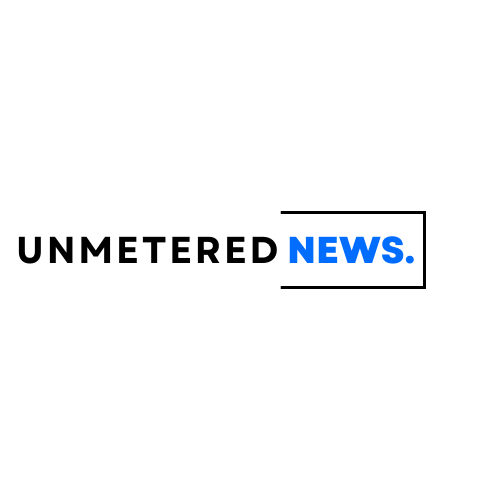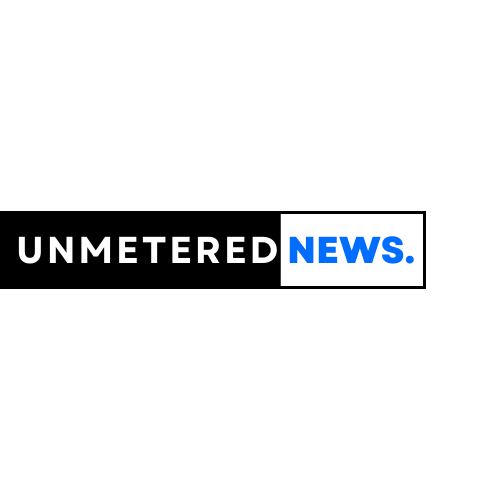- Home
- Advertise With us
- World News
- Tech
- Entertainment
- Travels & Tours
- Contact US
- About us
- Privacy Policy
Top Insights
YouTube turns 20: How one video at the zoo changed the internet forever


Did you go to the zoo 20 years ago? Over 364 million people did.
On April 23, 2005, YouTube co-founder Jawed Karim stood in front of the elephants at the San Diego Zoo, recorded some light commentary, and posted it to YouTube. It was the first ever video uploaded to the platform. Originally conceived as a dating site, YouTube instead ushered in a new digital world: one of abundant content, influencers and creators, algorithmic obsession, the viral spread of disinformation, and a society increasingly shaped by metrics — likes, shares, and views.
Its impact is so vast that it’s difficult to measure. Last year alone, the video-sharing platform brought in $36.15 billion in ad revenue, according to Variety. At VidCon 2025, YouTube’s VP of Creator Products, Amjad Hanif, shared that roughly 20 million videos are uploaded to the platform every day.
YouTube wasn’t the first social media site. Platforms like GeoCities, Classmates.com, SixDegrees.com, Friendster, and MySpace all predate it. But those sites functioned like static digital places for users to present personal information or to find people they already knew in real life. There was no algorithm, and certainly no “content” in the way we understand it today. YouTube, in its early days, was similar. Yet somehow it not only endured but flourished, shifted the fabric of our communication, and democratized the ability for documentary filmmakers, comedians, and artists to make their work. What was once a place designed for dating has become a mass of monetization and the home of the $250 billion creator economy.
How did we get here? And, 20 years later, what comes next?
The first creator economy
YouTube didn’t just host videos; it created the first true creator economy, giving rise to a generation of influencers who could actually make a living from their work. Yes, people were making videos before YouTube, but traditional media had high walls. Hollywood gatekeepers controlled who got to be seen, heard, and paid. YouTube blew that model wide open.
“The reason YouTube has outlasted almost every other platform, or stayed the distance, is that when it comes to longform video, it’s very simple — it’s not just a content platform, it’s a creator economy backbone,” Matt Navarra, a social media expert, told Mashable. “While other platforms were following trends, YouTube built infrastructure.”
Google acquired YouTube in 2006, and, once YouTube became part of the largest and most powerful search engine in the world, it had a pretty spectacular amount of resources, traffic, and money at its disposal — and it gave some of those resources, traffic, and money to its users.
In 2007, YouTube launched the YouTube Partner Program, introducing creator payouts, which Mark Bergen, a journalist and author of Like, Comment, Subscribe: How YouTube Drives Google’s Dominance and Controls Our Culture, argues effectively invented the idea of the content creator as a profession. Users began relying on the platform to make an income, and that financial incentive made creators loyal; few were eager to abandon a platform that paid them, especially when rivals couldn’t offer the same. More than that, new creators began flooding the YouTube system, hoping to experience the same freedom and fame available to them only on the platform.
But long before the paychecks and polished production came the passion. Early creators like John and Hank Green weren’t chasing clout or a paycheck — because neither really existed yet. “When we started, there was no way to make money and there was also no status tied to it,” Hank Green later recalled during VidCon 2025’s “YouTube Legends” panel. That was part of the appeal. “Nobody [was] getting paid well, but everybody’s together, loving it, and community, it turns out, is more important for happiness than money. I miss those days when I was making $20,000 a year with a bunch of nerds who didn’t expect that it would ever become a cultural force or phenomenon,” he said. “But I’m also very happy that there is an opportunity for really talented people who would never be able to have creative careers, to have those careers now.”
YouTube has “figured out the creator economy and has had a lock on that for nearly 20 years. Facebook, Twitter, TikTok, Snapchat, everyone’s tried and failed to come anywhere close to that,” Bergen told Mashable. He said none of the other platforms “have built out just this size and scale of an actual digital economy and a workforce.”
Navarra pointed out that the early YouTubers — creators like John and Hank Green, Rhett & Link, Grace Helbig, and Tyler Oakley, many of whom were inducted into the inaugural VidCon Hall of Fame this year — didn’t only create content, but they built empires, aided by YouTube’s global reach and monetization tools. Navarra said it set the “gold standard” for creator sustainability.
Videos don’t just trend, they rank — and that’s a superpower that no one else has quite matched in the same way.
A big part of this success is due to discoverability, which didn’t happen independently.
“That’s a major reason why you have all these incentives for people to keep posting, to keep upping the production value, to keep trying to become an influencer and creator, because you can make a living or aspire to make a living. And you can’t discount the fact that it’s been part of Google,” Bergen said.
That integration gave YouTube a unique edge. As Navarra put it, “Videos don’t just trend, they rank — and that’s a superpower that no one else has quite matched in the same way.”
Of course, being the first had its drawbacks. YouTube had to confront the growing pains of content creation before anyone else, especially when it came to moderation. Its policies evolved over time, and other platforms often followed its lead, though not without controversy.
“YouTube has been the canary in the coal mine for content moderation at scale because it faced existential threats earlier than most platforms,” Navarra said. And it’s true. In the early days, YouTube focused on removing videos that violated its guidelines related to nudity, graphic violence, and hate speech. But as the platform matured, so did its approach. It had to make room for content with educational, documentary, or artistic value, and later, make calls on videos in the public interest, like campaign content from electoral candidates that violated its own policies.
“YouTube has become one of the most brand-safe video or social platforms, which is why advertisers still spend big there despite their size and complexity,” Navarra said, adding that while they “haven’t been without their failures,” they have still fared “better than most platforms across the longer time frame.”
What’s next? Short-form vs. long-form, AI, and TV
YouTube was a pioneer in online video, but it seemed caught off guard when TikTok made short-form vertical video the dominant format. TikTok entered the U.S. market in 2018, prompting YouTube to respond with Shorts in 2019. Instagram quickly followed with Reels in 2020.
YouTube Shorts now averages over 200 billion daily views, Hanif said during a YouTube Keynote at VidCon 2025, intended to celebrate its 20th anniversary. That’s a huge number, but it isn’t necessarily representative culturally. It’s more of a “functional tool that hasn’t found its soul or character or purpose as much as other platforms have in terms of short-form video,” Navarra said.
“It works on paper: the views are huge, the monetization has improved, but culturally, TikTok owns the vibe. The issue is more perception… YouTube’s DNA is in storytelling and depth… If YouTube can crack cultural relevance with Shorts and not just scale, then it becomes fairly unbeatable,” Navarra said.
And while plenty of people watch YouTube Shorts, viewers are leaning more towards long-form video on YouTube — and they’re watching it on their TVs.
“More and more when people say they’re watching TV, they’re watching YouTube,” Hanif said at VidCon.
Gwen Miller, the senior director of growth at Mythical Entertainment, noted during a VidCon panel that this trend bodes well for creators. Longer watch times on TVs mean viewers are more likely to sit through ads, which leads to greater earnings for creators.
Content isn’t the only thing changing on YouTube, and AI is quickly becoming a driving force behind where the platform is headed next.
“In terms of AI and YouTube’s future, if you look where YouTube is heading, AI is central,” Navarra said. “It’s not a gimmick but as a growth engine. The platform’s big advantage isn’t just the size and age, it’s the way it quietly builds the most advanced tools for creators anywhere else on the internet.”
And YouTube CEO Neal Mohan announced last week at the Cannes Lions 2025 Festival of Creativity that Veo 3, the latest model of Google DeepMind’s video generation model, which allows you to create AI-generated backgrounds and video clips, is coming to YouTube Shorts later this summer.
Autodubbing, an AI tool that allows creators to dub their videos in other languages, is currently available in nine languages and will soon be available in 20 languages, Hanif said. Kevin Allocca, YouTube’s global director of culture and trends, said at VidCon that 52 percent of 14 to 24-year-olds in the U.S. have watched content or creators that have been translated from another language. For instance, MrBeast dubs his videos in 16 different languages, including Japanese, French, Hindi, and Spanish, which have garnered him massive followings internationally.
The idea that AI is central to the future of creation isn’t something YouTube is alone in predicting. In 2023, Ollie Forsyth, the founder of New Economies, found that 33 percent of creators used AI. That number has jumped to 80 percent in 2025, in large part due to the importance of language dubbing. During Forsyth’s talk “Mapping the Modern Creator Economy: Trends, Tensions, and What Comes Next” at VidCon this year, he argued that every creator is going to have to be AI-focused because AI agents will be able to allow creators to be truly flexible and more efficient. It’ll help them free up the time they spend on admin, finances, brand partnerships, marketing, and more as startups use AI to solve these problems.
If history is any indication of the future, it might be more helpful to look at this from a different perspective — it isn’t necessarily guessing what the future of YouTube will look like, but more knowing that whatever future is chosen will be mirrored across every other social media platform.
Related Articles
The stablecoin evangelist: Katie Haun’s fight for digital dollars
In 2018, when Bitcoin was trading around $4,000 and most Americans, at...
Perplexity’s AI-powered browser opens up to select Windows users
Perplexity is planning to open up its Comet browser that’s powered by...
Senate upholds ban on State AI laws in Trumps budget bill
As Republicans in Congress push to pass Donald Trump’s so-called “Big Beautiful...
Moratorium on state AI regulation clears Senate hurdle
A Republican effort to prevent states from enforcing their own AI regulations...









Leave a comment